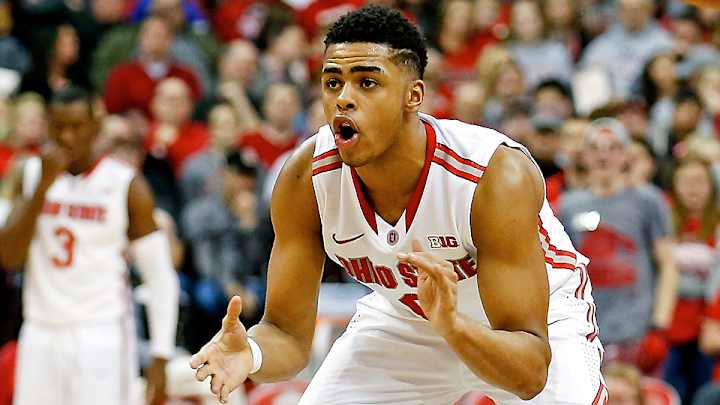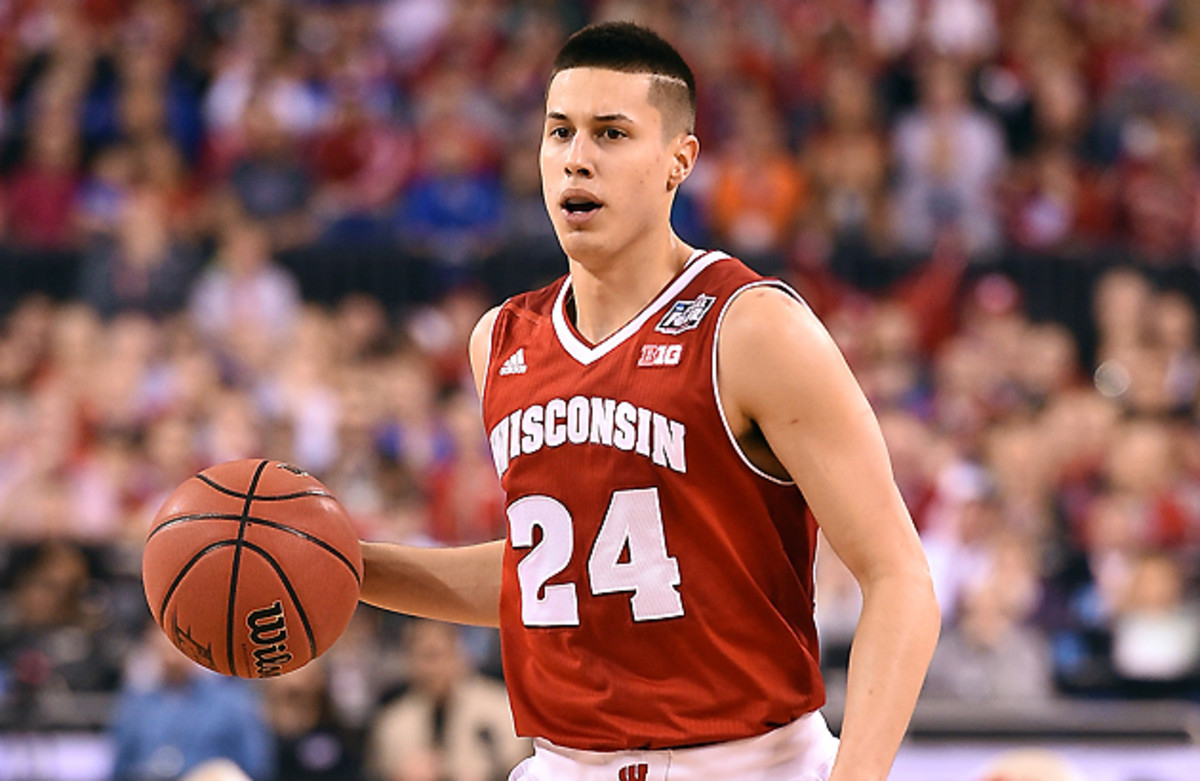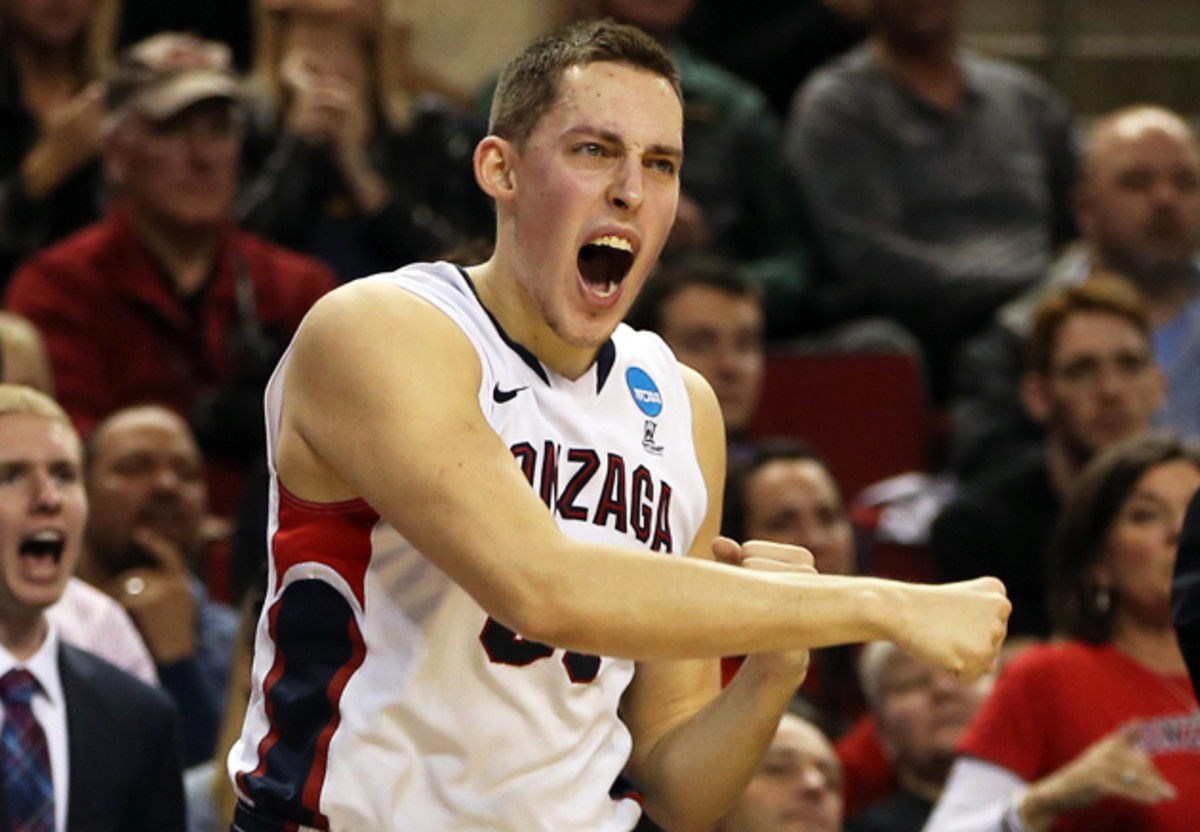D'Angelo Russell, Bronson Koenig among most surprising players

Every college basketball season features hundreds of players who exceed expectations. Their performance is considered “surprisingly” good. This is a subjective concept that is bound to create controversy, but SI.com attempted to highlight 11 players who fit the bill. They are listed in alphabetical order.
Quinn Cook, Duke
Year: Senior
Position: Guard
Stats: 15.7 ppg, 3.2 rpg, 2.7 apg
Duke’s decision to start five-star recruit Tyus Jones at point guard seemed as though it could result in diminished playing time and production from Cook. Instead, after being shifted to a mostly off-ball role, he recorded career-highs in minutes per game (35.8), points per 40 minutes (17.1), true shooting percentage (61.2) and offensive rating (127.7). Though he spent more time the previous two seasons initiating the Blue Devils' offense and distributing to others, Cook quickly found his bearings in Duke's backcourt. With Jones running the show and Cook serving as one of the primary offensive options—along with center Jahlil Okafor and wing Justise Winslow—the Blue Devils finished third in the country in adjusted points per possession.
• MORE CBB: How friendship of Okafor & Jones led to Duke's title

Bronson Koenig, Wisconsin
Year: Sophomore
Position: Guard
Stats: 8.7 ppg, 1.8 rpg, 2.5 apg
The beginning of Koenig’s rise into one of the top perimeter threats in the Big Ten doubled as Wisconsin’s lowest point of the season. Point guard Traevon Jackson underwent surgery and missed the remainder of the regular season after suffering a foot injury during the second half of the Badgers’ baffling Jan. 11 loss to Rutgers. With Jackson sidelined, Koenig began receiving more playing time. He went from averaging 20.4 minutes per game before Jackson's injury to 35 minutes per game after, and guided Wisconsin to its first national championship game berth since 1941. For the season, Koenig connected on 41.1% of his three-point attempts and posted a 120.9 offensive rating, which ranked in the nation’s top 75. His emergence—he also averaged fewer than one turnover per game—was a big factor in Wisconsin winning the Big Ten regular season and conference tournament championships and producing the most efficient offense since at least 2002.
• MORE CBB: Wisconsin made history, memories before falling to Duke
Frank Mason III, Kansas
Year: Sophomore
Position: Guard
Stats: 12.6 ppg, 3.9 rpg, 3.9 apg
When Devonte’ Graham signed with Kansas last May, he was expected to compete with Mason and Conner Frankamp for playing time at point guard. Frankamp decided to transfer to Wichita State, and Mason played well enough to command the majority of minutes at the position. As a sophomore this season, Mason made statistical jumps across the board, including in offensive rating (105.8 to 111.5), three-point shooting percentage (32.7 to 42.9) and free-throw shooting percentage (66.2 to 78.6). His performance helped Kansas shake off two ugly nonconference losses—by 32 to Kentucky in November and by 25 to Temple in December—to win at least a share of its 11th consecutive regular season Big 12 championship.
Cameron Payne, Murray State
Year: Sophomore
Position: Guard
Stats: 20.2 ppg, 3.7 rpg, 6.0 apg
Payne’s sophomore season may not qualify as a surprise, given that he led Murray State in scoring as a freshman and was voted the Ohio Valley Conference’s player of the year in the preseason. Still, the 6'2" point guard increased his offensive efficiency and assisted on a larger percentage of Murray State’s baskets than he did a year agol all while shouldering a larger load of the Racers’ offense. In the process, he evolved from promising mid-major prospect to projected first-round draft pick (he has officially declared, and DraftExpress currently pegs him at No. 21), helped Murray State win 25 consecutive games between November and March and propelled the Racers’ undefeated (16-0) run through conference play.
#http://www.120sports.com/video/v119657184/maryland-to-play-georgetown
Gary Payton II, Oregon State
Year: Junior
Position: Guard
Stats: 13.4 ppg, 7.5 rpg, 3.2 apg, 3.1 spg
Payton II, whose father also starred for the Beavers before embarking on a Hall of Fame career in the NBA, arrived at Oregon State as a three-star recruit who SI.com projected in the preseason to average 10 points and 3.6 rebounds. Instead, the 6'3" junior wound up leading the Beavers in scoring with 13.4 points per game and pulling down a team-high 7.5 rebounds. Payton II also was one of the most disruptive perimeter defenders in the country. He recorded the nation’s highest steal rate (5.5) and contributed to Oregon State turning opponents over on 22.8% of their possessions during Pac-12 play, the highest mark in the conference. We probably could have predicted Payton's defensive prowess, considering his father, whose nickname is “The Glove,” shares the record for most NBA All-Defensive team selections (9).
Jakob Poeltl, Utah
Year: Freshman
Position: Center
Stats: 9.1 ppg, 6.8 rpg, 0.7 apg
Frank Kaminsky, Wisconsin, Duke clean up in first-ever Effy Awards
After Utah announced Poeltl, a native of Vienna, Austria, had signed his National Letter of Intent with the school last April, he spoke optimistically to The Salt Lake Tribune about the Utes’ chances of reaching the NCAA tournament for the first time since 2009. “I heard they used to be a pretty good college for basketball, but they've had a drought." Poeltl said. "Hopefully I can help them go back to the tournament. It would be good for the whole college." Not only did Poeltl lead Utah back to the NCAAs as a No. 5 seed, he lifted the Utes to the Sweet 16 and 26 total wins, the program’s most since 2004-05. The 7-footer excelled as a rebounder (6.8 per game) and shot-blocker (1.9) while emerging as a potential NBA draft pick, though he will return for his sophomore year.
Year: Freshman
Position: Guard
Stats: 19.3 ppg, 5.7 rpg, 5.0 apg
Report: Ohio State guard D'Angelo Russell declares for NBA draft
Russell finished his senior year of high school ranked No. 16 in the RSCI, which incorporates data from several recruiting services, yet few foresaw him blossoming into one of the best offensive players in the country as a freshman. During Big Ten play, Russell knocked down 49.7% of his two-point shot attempts, 39.5% of his threes and posted the second highest assist rate (32.7) in the conference while using a team-high 30.9% of available possessions. The 6'5" guard was as entertaining as he was productive—such as when he was slinging bounce passes into tight windows—and heads to the NBA draft as a potential top-five pick.
Melo Trimble and Jake Layman, Maryland
Trimble (freshman, guard) stats: 16.2 ppg, 3.9 rpg, 3.0 apg
Jake Layman (junior, guard/forward) stats: 12.5 ppg, 5.8 rpg, 0.7 bpg
Trimble and Layman merit their own respective blurbs, but the two Maryland standouts are being combined in the interest expanding this list of “surprise” players. Trimble, a four-star recruit out of Bishop O’Connell (Va.) High, solidified a backcourt that lost guards Seth Allen, Nick Faust and Roddy Peters to transfer in the offseason. The 6'3" point guard excelled at getting to the free-throw line—he drew 6.2 fouls per 40 minutes during Big Ten play, which ranked second in the conference—and led Maryland with 16.2 points per game. The 6'9" Layman, meanwhile, increased his shooting accuracy inside and outside the arc, rebounded at higher rates on both ends of the floor and improved his free-throw shooting.
Troy Williams, Indiana
Year: Sophomore
Position: Forward
Stats: 13.1 ppg, 7.4 rpg, 2.0 apg
After struggling through bouts of inconsistent play as a freshman, Williams this season flashed glimpses of the potential that made him a top-50 recruit in the class of 2013 out of Oak Hill (Va.) Academy. He became one of the best defensive rebounders in the Big Ten, slashed his turnovers, made strides as a facilitator and increased the percentage of shots he took at the rim by nearly nine percent, which helped offset his subpar perimeter jump shot. Williams’s growth, coupled with improved play from point guard Yogi Ferrell, drove Indiana to an NCAA tournament berth and a 20-14 record after it lost two of its top three scorers from the previous season and was picked to finish ninth in the Big Ten in a preseason media poll.

Kyle Wiltjer, Gonzaga
Year: Junior
Position: Forward
Stats: 16.7 ppg, 6 rpg, 1.9 apg
Wiltjer’s stellar junior season at Gonzaga was the product of several factors, and Zags coach Mark Few’s sense for how to leverage Wiltjer’s inside-out skills. He contributed to Kentucky’s 2012 national title and was named the SEC’s sixth man of the year in 2013, but had yet to display his full potential. After sitting out the 2013-14 season as a redshirt—a time during which he improved his strength and flexibility—Wiltjer emerged as one of the most lethal stretch forwards in the nation. Content to roam the perimeter hunting jump shots or back down defenders in the paint, Wiltjer ranked second among West Coast Conference players with a 129.2 offensive rating during conference play.
